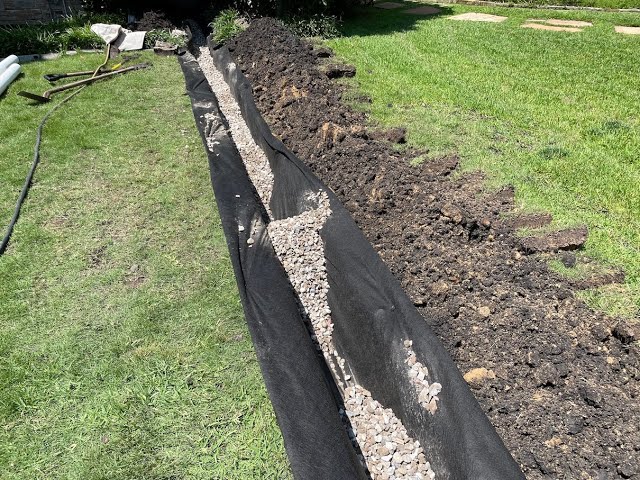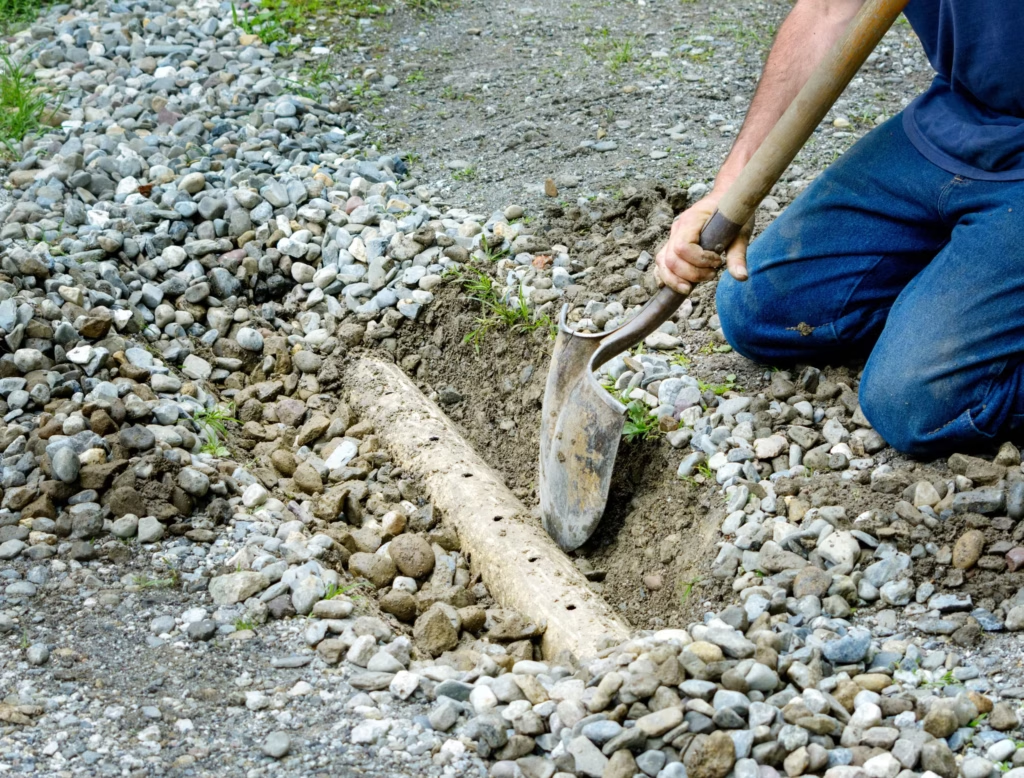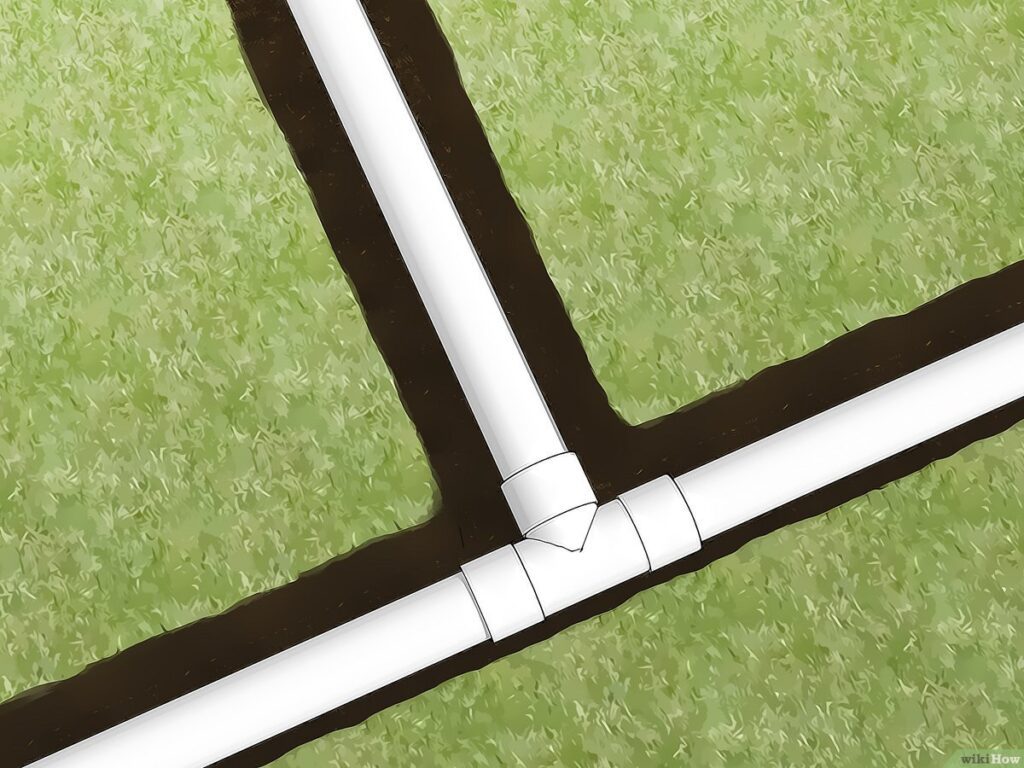How Wide Should a French Drain Be? Learn Before You Dig
Dealing with water pooling around your property? A French drain system can be the perfect fix! It directs water away, protecting your home’s foundation and preventing damage.
But when installing one, the trench width is key.
In this guide, we’ll dive into how to determine the right trench width for your French drain, ensuring maximum efficiency for your drainage system.
How wide should a French drain be?
A French drain is usually about 6-12 inches wide, but this can vary based on the water volume you’re trying to divert. Wider drains are better for areas with significant water accumulation.
Key Takeaways
- The width of a French drain depends on several factors, including the size of the area needing drainage and the amount of water to be diverted.
- A typical French drain is between 6 to 12 inches wide, but this can vary based on the specific requirements.
- Proper planning and installation are key to ensuring the drain functions effectively.
What Is a French Drain?
A French drain is a trench filled with gravel or rock that helps direct surface water away from a specific area.
It typically includes a perforated pipe that allows water to enter and flow away from the source, carrying it to a designated drainage area.
The design is simple but effective in handling excess water that could otherwise cause flooding, soil erosion, or damage to foundations.
French drains are commonly used in areas like basements, driveways, gardens, and along the perimeter of foundations.
They can also be a great option for controlling groundwater and surface runoff in areas with heavy rainfall or poor drainage systems.
Factors That Affect the Width of a French Drain

The width of a French drain is determined by several factors.
While there’s no one-size-fits-all answer, understanding these factors will help you decide how wide the drain should be for your specific needs.
1. Amount of Water to Be Diverted
One of the primary considerations when determining the width of your French drain is how much water needs to be diverted.
If you are managing a small amount of water or runoff, a narrower drain may suffice.
However, larger areas that collect more water or drainage systems with a higher volume will require a wider trench to ensure proper flow.
Tip: A standard French drain is typically designed to handle up to 4 to 5 inches of rain per hour. If you live in an area that experiences frequent heavy rains, a wider drain may be necessary.
2. Drainage Area
The size of the area that requires drainage will also impact the width of the French drain. Larger areas will require wider drains to ensure water is efficiently collected and carried away.
For example, if you are draining an entire yard or garden, you may need to dig a wider trench to capture enough water.
Tip: For small, localized drainage issues (like around a downspout or a flower bed), a narrower French drain of 6 to 8 inches may be sufficient.
For larger drainage areas, consider widening the trench to 12 inches or more.
3. Type of Soil
The type of soil surrounding the area where you plan to install the French drain will also influence the width.
Sandy soils, which allow water to pass through quickly, may not require a very wide drain.
However, clay or compacted soils, which don’t drain as efficiently, may require a wider trench to ensure water flows properly.
Tip: If you have clay or dense soils, a wider French drain (12 inches or more) will provide better water flow. Conversely, in sandy or well-drained soils, a narrower trench may suffice.
4. Slope of the Ground
The slope of the ground where you are installing the French drain can also impact the design.
If the area has a steep slope, the water may flow faster, meaning the trench needs to be wider to accommodate the increased flow. On flatter surfaces, a narrower trench may be enough.
Tip: For areas with a steep incline, widening the French drain to accommodate faster water flow is essential to prevent overflow
Typical Widths for French Drains

While the width of a French drain depends on the factors mentioned above, there are common guidelines that can help determine the appropriate size for most french drain installations.
Here are the typical widths for French drains based on the scope of the project:
1. 6-8 Inches Wide
A French drain that is 6 to 8 inches wide is often sufficient for small drainage needs, such as around garden beds or to divert water from a downspout.
This width is generally enough for areas with light water flow and where the soil drains relatively well.
2. 10-12 Inches Wide
For larger drainage areas or moderate water flow, a width of 10 to 12 inches is more appropriate.
This size is often used for yards, driveways, or other areas that experience moderate water accumulation.
It can handle heavier water flow and works well in typical residential drainage systems.
3. 12-18 Inches Wide
In situations where you are managing substantial water flow, such as around large foundations or across large properties, a French drain that is 12 to 18 inches wide may be required.
This width is ideal for properties with heavy rain or where there is a need to divert significant water away from buildings or structures.
Tip: If you are unsure of the size, it’s always better to go slightly wider than needed to ensure the system will handle the water volume effectively.
How to Calculate the Right Width for Your French Drain

While general guidelines are helpful, determining the right width for your French drain will depend on the specifics of your property.
Here’s a simple method to calculate the appropriate size:
Step 1: Measure the Area Needing Drainage
Start by measuring the length and width of the area you need to drain. For example, if you need to drain a section of your garden, measure the total square footage of the area.
Step 2: Estimate Water Flow
Determine how much water typically collects in the area during heavy rainfall. This will help you understand how large of a drain you need to manage the water effectively.
You can look at historical rainfall data for your region or check for visible pooling after rainstorms.
Step 3: Choose the Correct Width
Based on the area’s size and water flow, choose a French drain width from the general guidelines provided.
If you are unsure, it’s a good idea to consult with a professional to ensure your drain will be effective.
Installing a French Drain: Steps to Follow
Once you have decided on the width and location of your French drain, it’s time to install it. Here’s a simple step-by-step guide to help you install your own French drain:
1. Dig the Trench
Using a shovel or trenching machine, dig a trench where you want to install the French drain.
Ensure the trench is the correct width (6-18 inches) and slopes downward to allow water to flow away from the source.
2. Line the Trench
Place landscape fabric along the sides and bottom of the trench to prevent soil from clogging the drain. This fabric will allow water to pass through while keeping dirt and debris out.
3. Add Gravel
Pour a layer of gravel into the trench, about 2 to 3 inches deep. This provides a solid base for the perforated pipe.
4. Install the Perforated Pipe
Place the perforated pipe on top of the gravel. The holes in the pipe allow water to enter and flow through the system. Make sure the pipe is angled downward to ensure proper water flow.
5. Cover the Pipe with More Gravel
Add more gravel over the pipe, covering it completely. This helps with water distribution and prevents the pipe from becoming clogged.
6. Cover the Gravel with Soil
Finally, cover the gravel with soil and tuck the landscape fabric over the gravel layer to hold everything in place. You can then level the soil to match the surrounding area.
When to Call a Professional
If you’re unsure about how wide your French drain should be, or if you’re dealing with complex drainage issues, it may be best to consult with a professional.
An expert can assess your property, provide precise calculations, and ensure that your French drain is installed correctly to avoid potential problems in the future.
Frequently Asked Questions
1. Can I install a French drain myself?
Yes, installing a French drain is a DIY project, but it requires careful planning and the right tools. If you’re unsure, it might be worth hiring a professional for advice.
2. How wide should my French drain be for a large yard?
For a large yard, a French drain width of 10 to 12 inches is typically ideal. If the water flow is significant, you may want to go even wider.
3. How deep should my French drain be?
A typical French drain should be about 18 to 24 inches deep. However, the depth may vary depending on the location and the amount of water that needs to be drained.
Conclusion
Choosing the right width for your French drain is crucial for ensuring effective water drainage and preventing potential water damage to your property.
By considering factors such as water flow, the area needing drainage, and soil conditions, you can select the appropriate width for your French drain.
With the right tools and planning, installing a French drain can be a DIY project, but when in doubt, it’s always a good idea to consult with a professional to ensure the best results.
